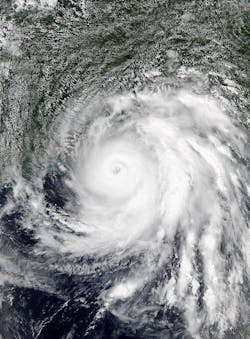EIA: Grid Power Interruptions down slightly in U.S.last year, but worst still hits many states
Power grid customers in Louisiana, Oregon, Texas, Mississippi and West Virginia experienced the longest duration system outages in 2021, as storms and other challenges impacted electricity resiliency, according to a new report by the U.S. Energy Information Administration.
Conversely, electricity customers in the District of Columbia, Delaware, Florida, North Dakota and Nevada had the shortest total time of non-momentary grid power interruptions last year, the EIA noted. For those states, those outages ranged from 52 minutes in DC to 102 minutes in Nevada.
Among the longest duration outages, Winter Storm Uri caused more than 4.5 million customer outages in Texas in February 2021, as an extended freeze shut down 52 GW of power plant capacity, including gas-fired and wind generation.
Enchanted Rock installing gas-fired Microgrids for Texas Retirement facilities
Hurricane Ida also hit Louisiana especially hard, leaving some 1.2 million customers without power for an extended time, then wreaking havoc across much of the U.S. Overall, Louisiana suffered a total time of more than 80 hours in grid outages—the worst such number calculated by the EIA.
On a more broad, slightly positive note, U.S. electricity customers experienced just more than seven hours of electric power interruptions in 2021, almost an hour less than the previous year. The average duration of those interruptions stayed at close to two hours, which has remained consistent over the past decade, the EIA says.
The nation experienced 21 named storms last year, making it the third most active Atlantic weather season on record. The need for both decarbonization and power resiliency is driving many businesses and mission critical entities such as airports to beef up their microgrid and on-site power capacities.
2022 Summer of Weather Discontent intensifies pace of C&I, Mission-Critical Energy moves
White Paper on Optimizing Mobile Workforces: A Comprehensive GIS tool from ArcGIS
About the Author
Rod Walton, EnergyTech Managing Editor
Managing Editor
For EnergyTech editorial inquiries, please contact Managing Editor Rod Walton at [email protected].
Rod Walton has spent 17 years covering the energy industry as a newspaper and trade journalist. He formerly was energy writer and business editor at the Tulsa World. Later, he spent six years covering the electricity power sector for Pennwell and Clarion Events. He joined Endeavor and EnergyTech in November 2021.
Walton earned his Bachelors degree in journalism from the University of Oklahoma. His career stops include the Moore American, Bartlesville Examiner-Enterprise, Wagoner Tribune and Tulsa World.
EnergyTech is focused on the mission critical and large-scale energy users and their sustainability and resiliency goals. These include the commercial and industrial sectors, as well as the military, universities, data centers and microgrids. The C&I sectors together account for close to 30 percent of greenhouse gas emissions in the U.S.
He was named Managing Editor for Microgrid Knowledge and EnergyTech starting July 1, 2023
Many large-scale energy users such as Fortune 500 companies, and mission-critical users such as military bases, universities, healthcare facilities, public safety and data centers, shifting their energy priorities to reach net-zero carbon goals within the coming decades. These include plans for renewable energy power purchase agreements, but also on-site resiliency projects such as microgrids, combined heat and power, rooftop solar, energy storage, digitalization and building efficiency upgrades.

